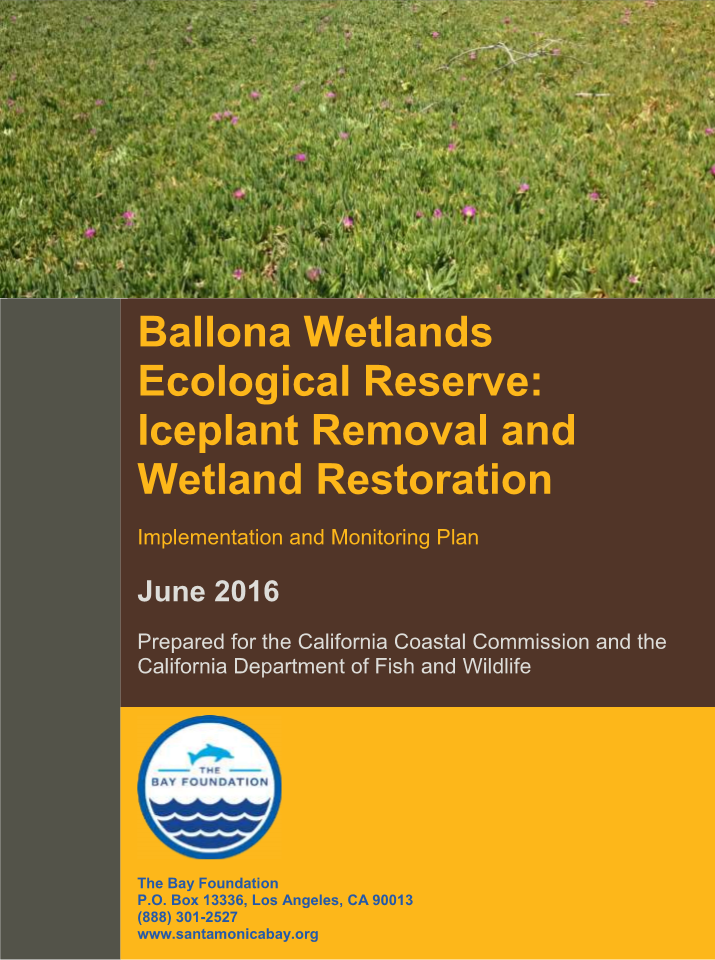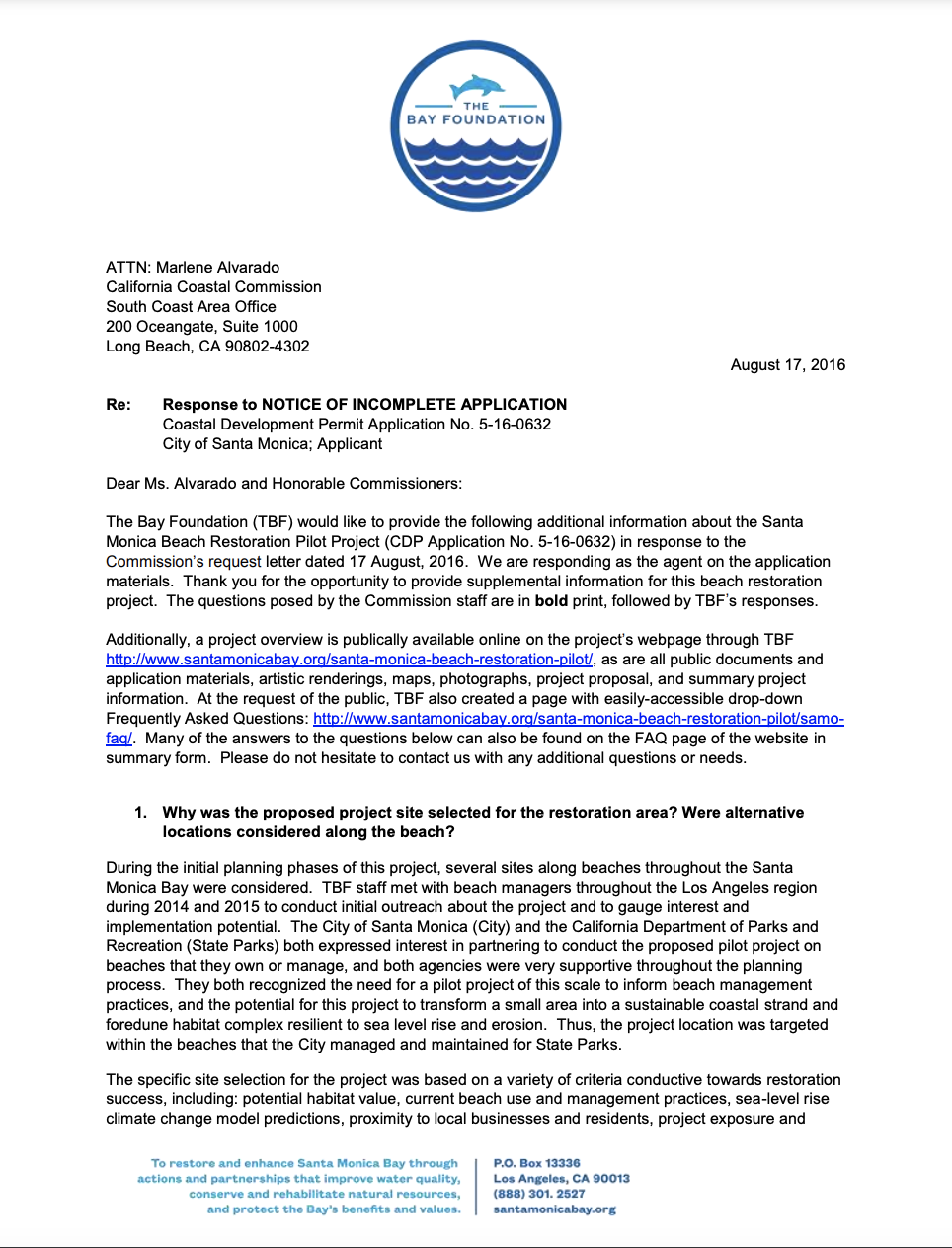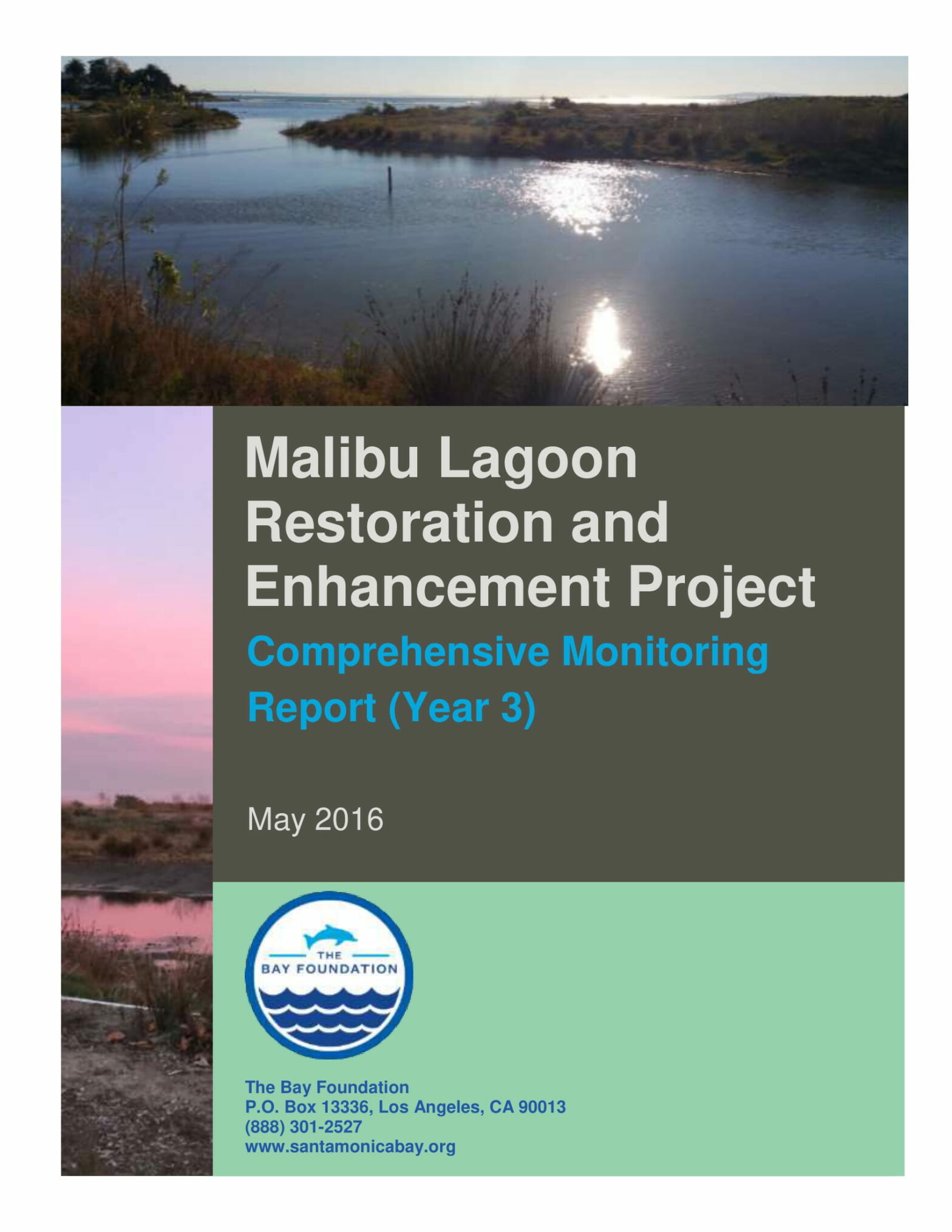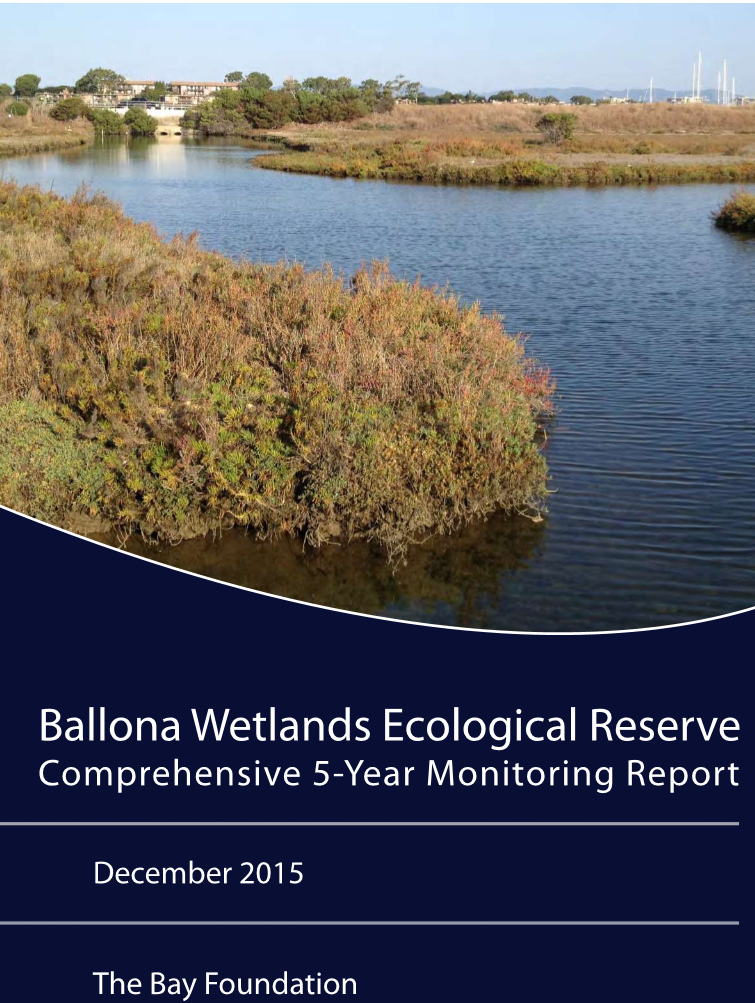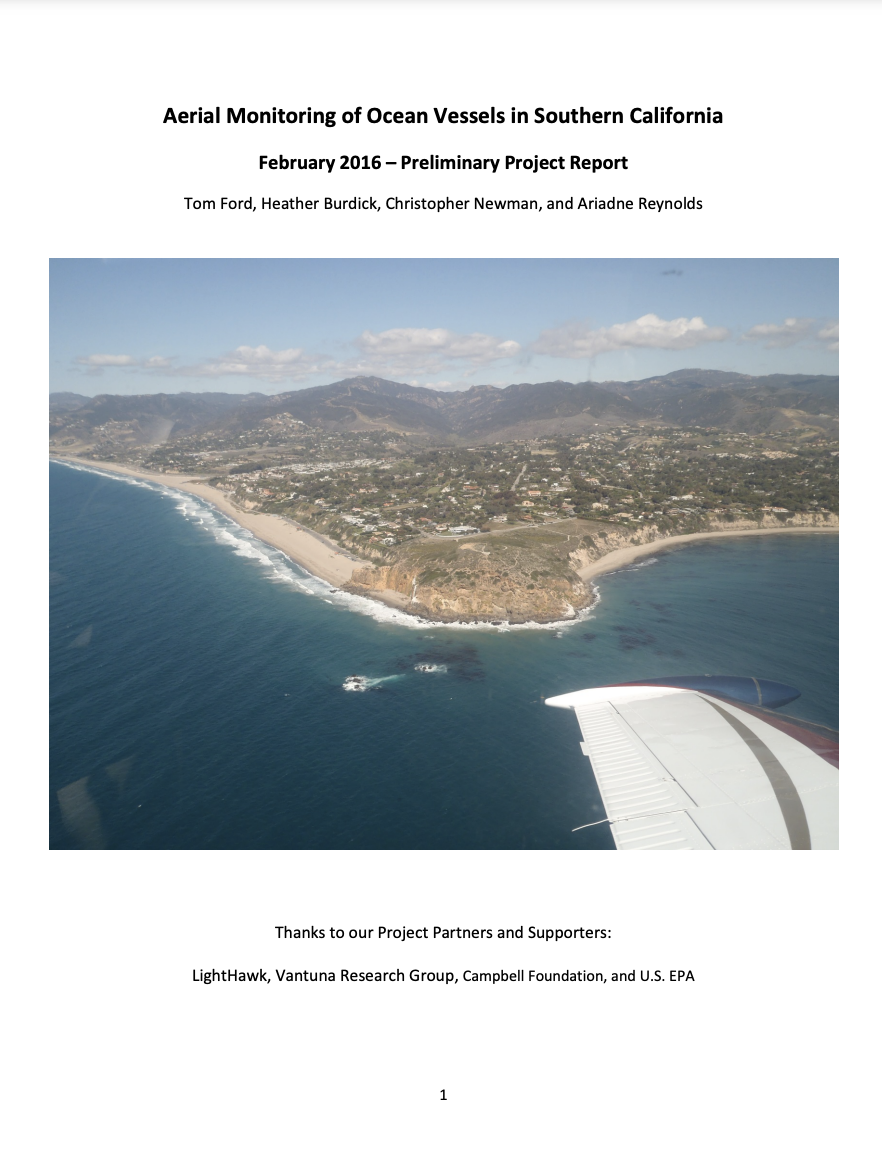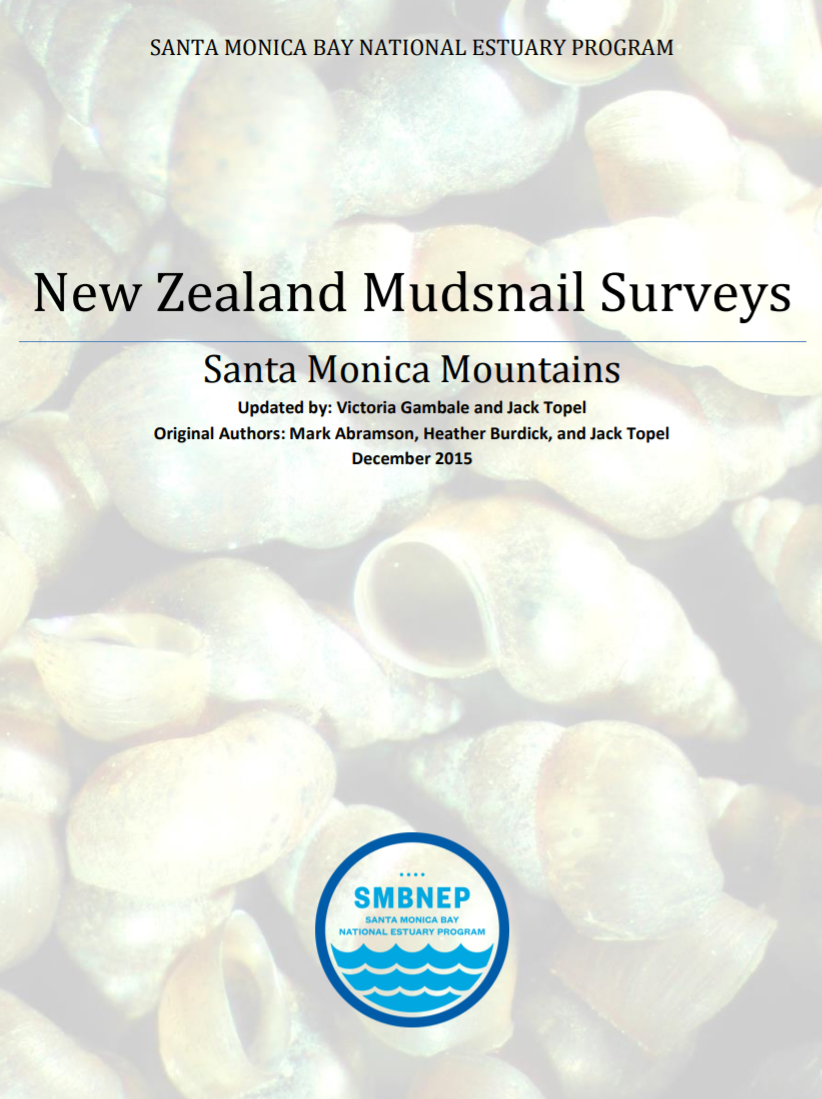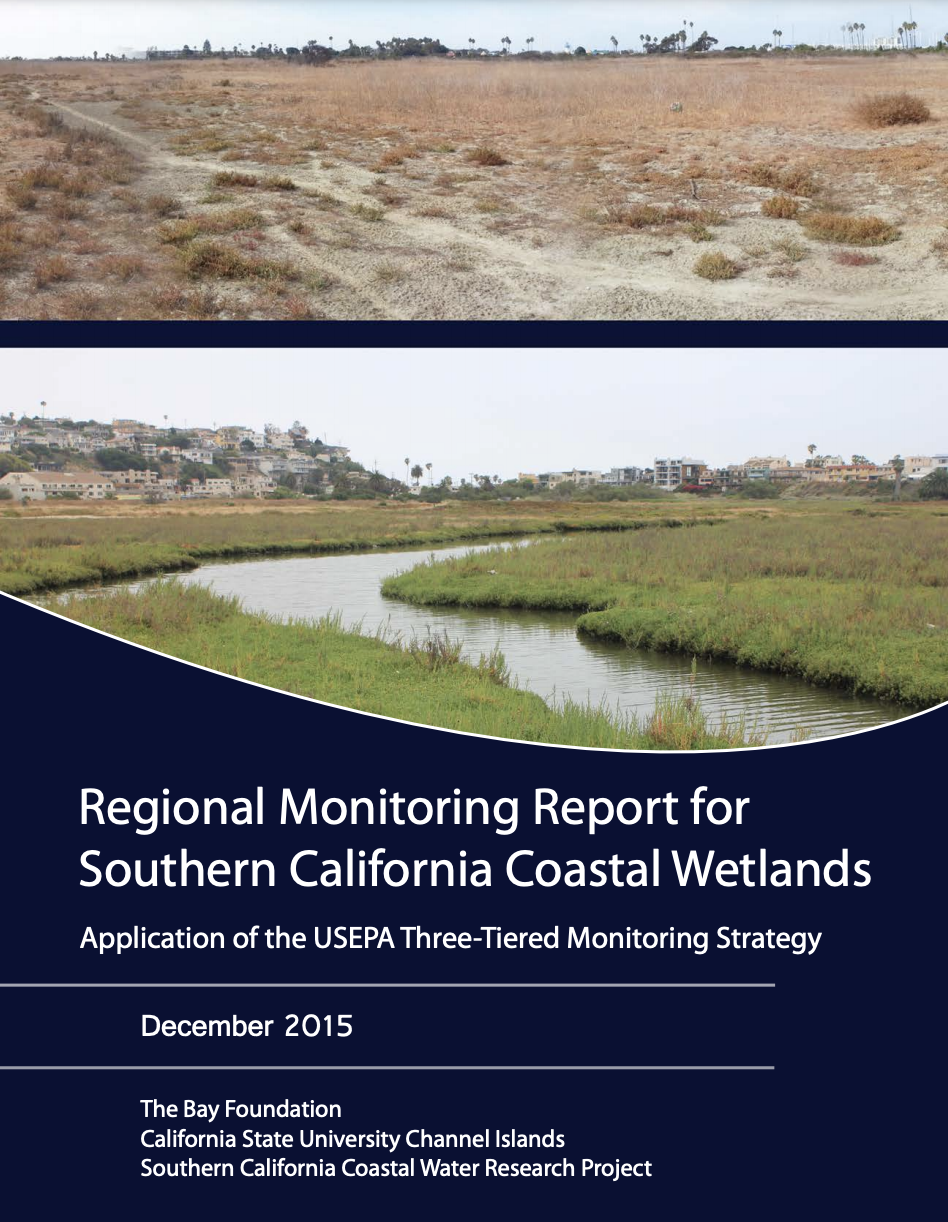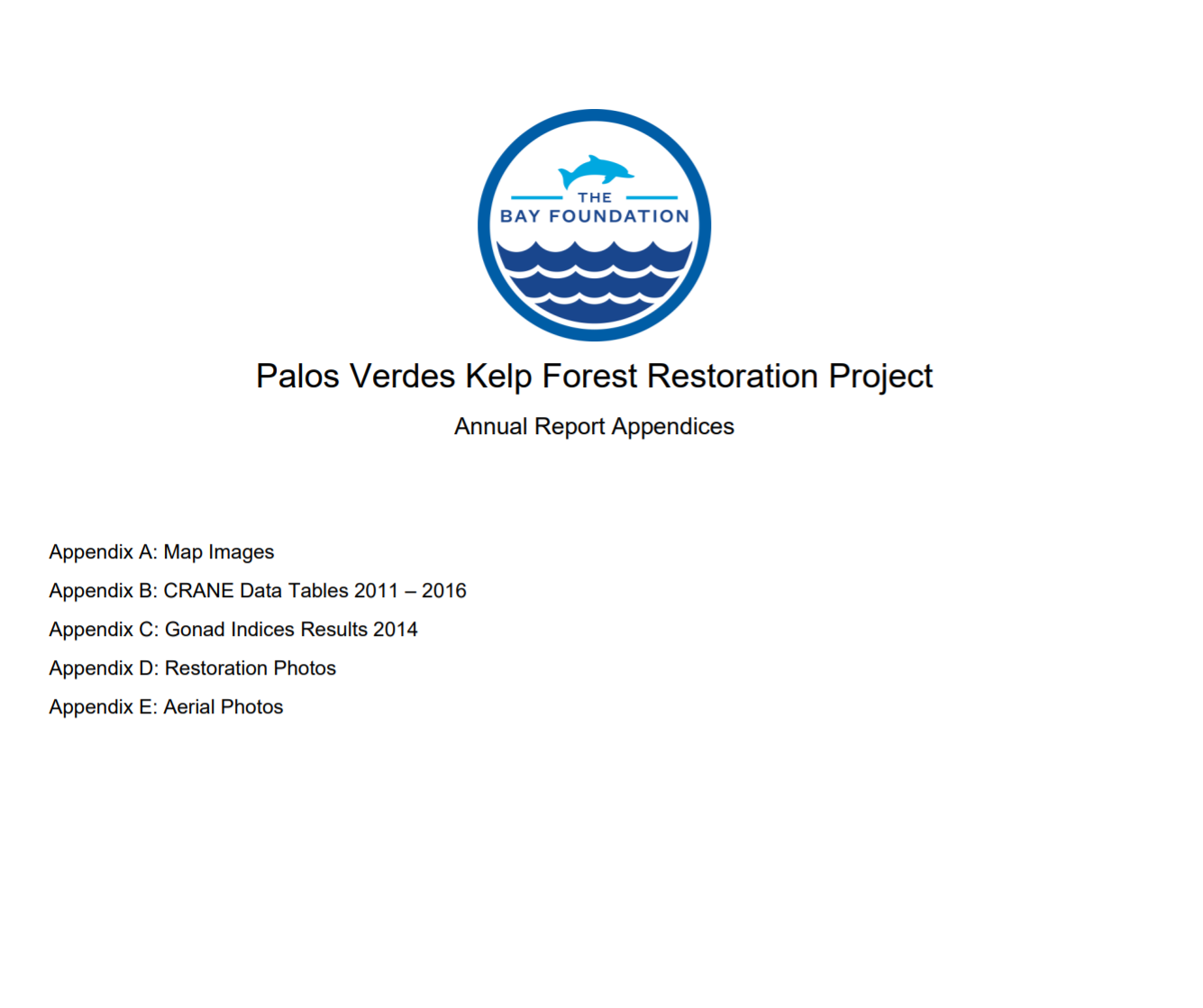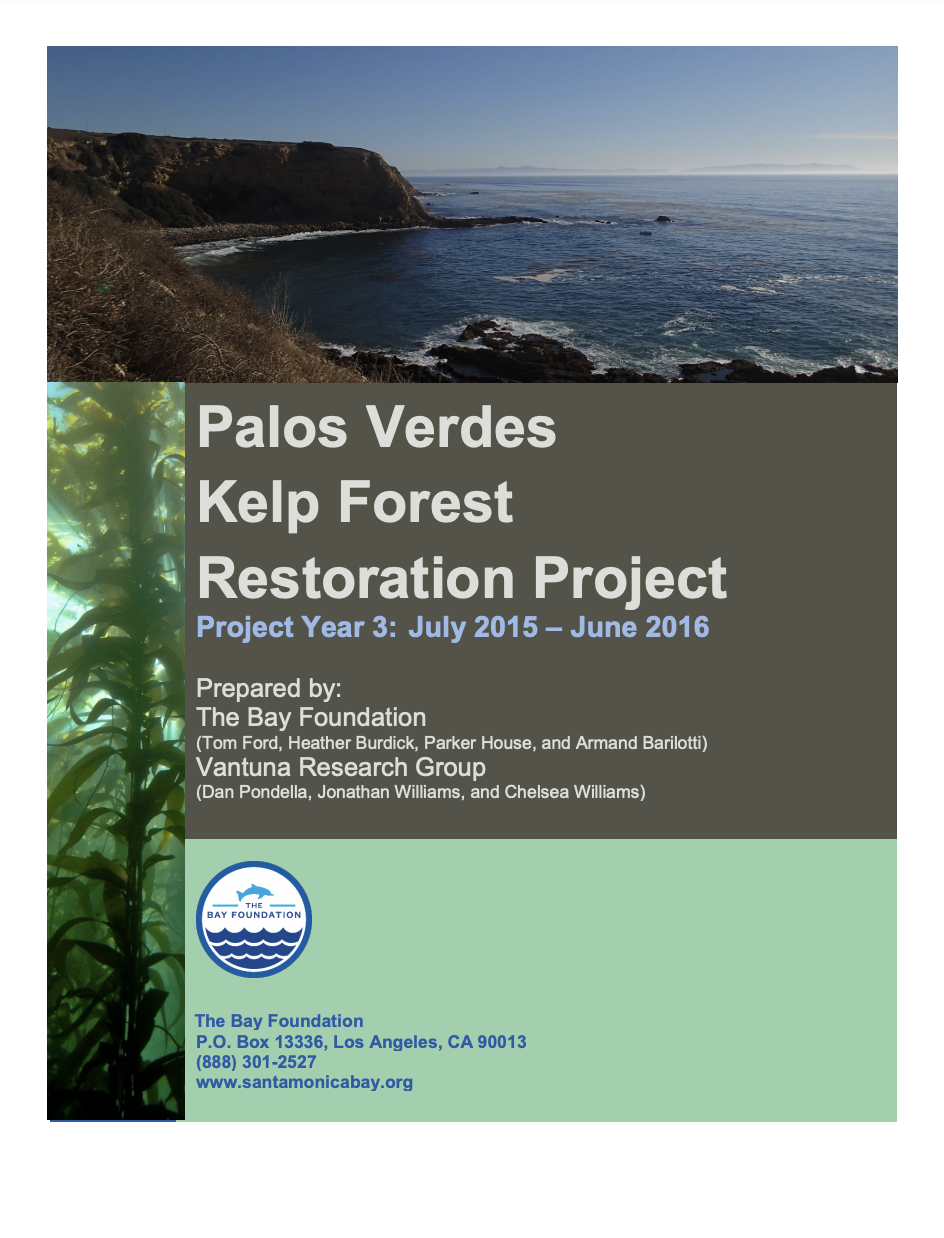This Implementation and Monitoring Plan was prepared for the California Coastal Commission and the California Department of Fish and Wildlife, and outlines the goals, benefits, and implementation and monitoring details for the Ballona Community Iceplant Removal Project.
Resource Type: Project Documents
CDP Permit Application: Supplemental Questions for the Santa Monica Beach Restoration Pilot Project
Response to Notice of Incomplete Application for the Santa Monica Beach Restoration Pilot Project Coastal Development Permit.
Malibu Lagoon Restoration and Enhancement Project Comprehensive Monitoring Report (Year 3)
The Malibu Lagoon Restoration and Enhancement Project was completed on 31 March 2013. An evaluation of post-restoration conditions, through detailed physical, chemical, and biological monitoring components, has resulted in several overarching trends. Find out more in this comprehensive 2016 report.
Ballona Wetlands Ecological Reserve Comprehensive 5-Year Monitoring Report, December 2015
In 2009, The Bay Foundation (TBF) partnered with the California Department of Fish and Wildlife (CDFW), California State Coastal Conservancy (SCC), and Loyola Marymount University (LMU) to assess the ecological condition of the Ballona Wetlands Ecological Reserve (BWER or Reserve). The monitoring program was developed to comprehensively survey the biological, chemical, and physical characteristics needed… Continue reading Ballona Wetlands Ecological Reserve Comprehensive 5-Year Monitoring Report, December 2015
Aerial Monitoring of Ocean Vessels in Southern California: February 2016 – Preliminary Project Report
Objective long-term data on the type, extent, and location of boating and boat-based fishing directly support the success of marine spatial planning and resource management of coastal oceans. This project was initiated to generate an objective fishery-independent dataset to define the extent of boating activities in the state waters off the coast of mainland southern… Continue reading Aerial Monitoring of Ocean Vessels in Southern California: February 2016 – Preliminary Project Report
New Zealand Mudsnail Surveys
The highly invasive New Zealand mudsnail was first reported in the Santa Monica Mountains in 2005. The snails were collected in 4 streams during bioassessment monitoring of the Malibu Creek watershed as part of a watershed-wide monitoring program1. As of 2014, NZMS have been detected in 14 streams in the Santa Monica Mountains. Read this… Continue reading New Zealand Mudsnail Surveys
Regional Monitoring Report for Southern California Coastal Wetlands – December 2015
This report is organized into several sections focused on the three tiers of the U.S. EPA monitoring program, with emphasis placed on the rigorous, Level 3 site-intensive data evaluations. For ease of interpretation and consistency, all data are presented by wetland in order from the furthest northern site (i.e., Carpinteria Salt Marsh Reserve) to the… Continue reading Regional Monitoring Report for Southern California Coastal Wetlands – December 2015
Southern California Green Abalone and Kelp Forest Restoration Project: January 1, 2012 – September 30, 2015
(Abstract) The Southern California Green Abalone and Kelp Forest Restoration Project aims to restore populations of green abalone (Haliotis fulgens), a federal species of concern, to Southern California where they were once plentiful and supported a thriving commercial fishing industry. This pilot project explored methods of spawning, rearing, and outplanting green abalone, investigated the genetic… Continue reading Southern California Green Abalone and Kelp Forest Restoration Project: January 1, 2012 – September 30, 2015
Kelp Forest Restoration Annual Report July 2015 – June 2016 (Year 3) – Appendices
Appendices to Year 3 Annual Report including project maps, photos and additional data.
Kelp Forest Restoration Annual Report July 2015 – June 2016 (Year 3)
Kelp forest ecosystems are iconic and productive features along the coast of California with services that span a wide array of consumptive (e.g., commercial and recreational fishing) and non-consumptive (e.g., tourism, scuba diving and coastal protection) uses. This publication provides a Year 3 update on the Palos Verdes Kelp Forest Restoration Project.
